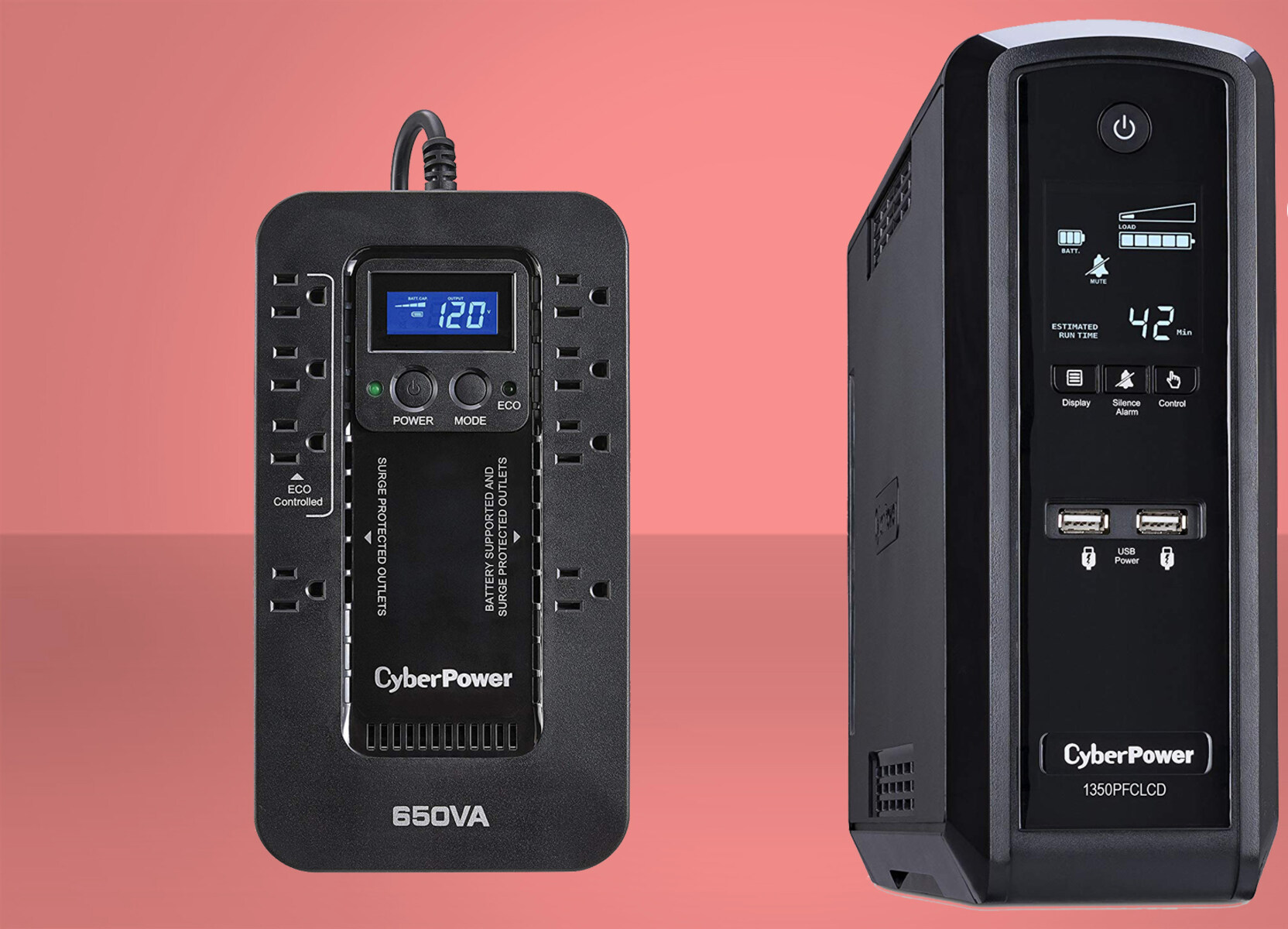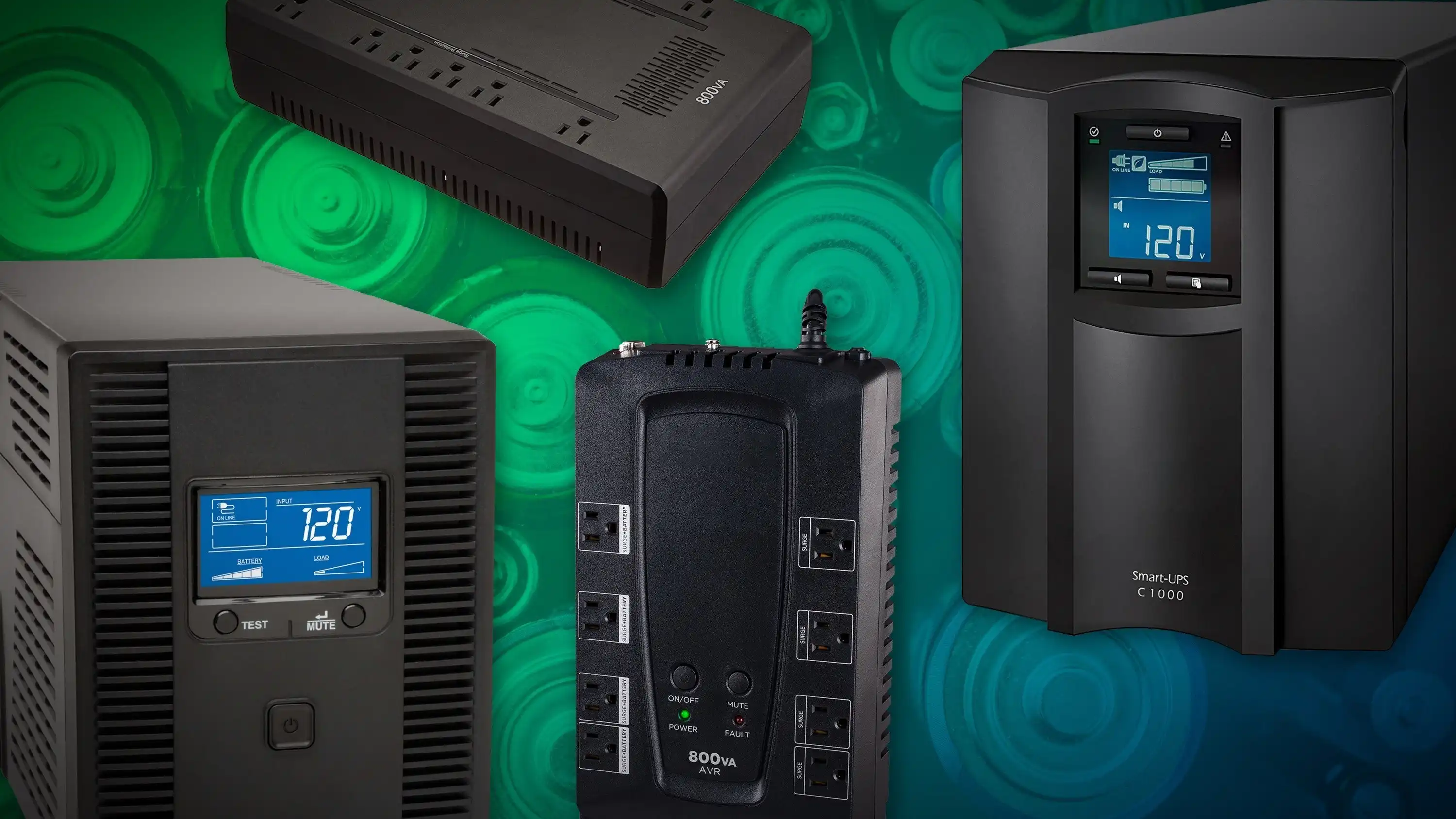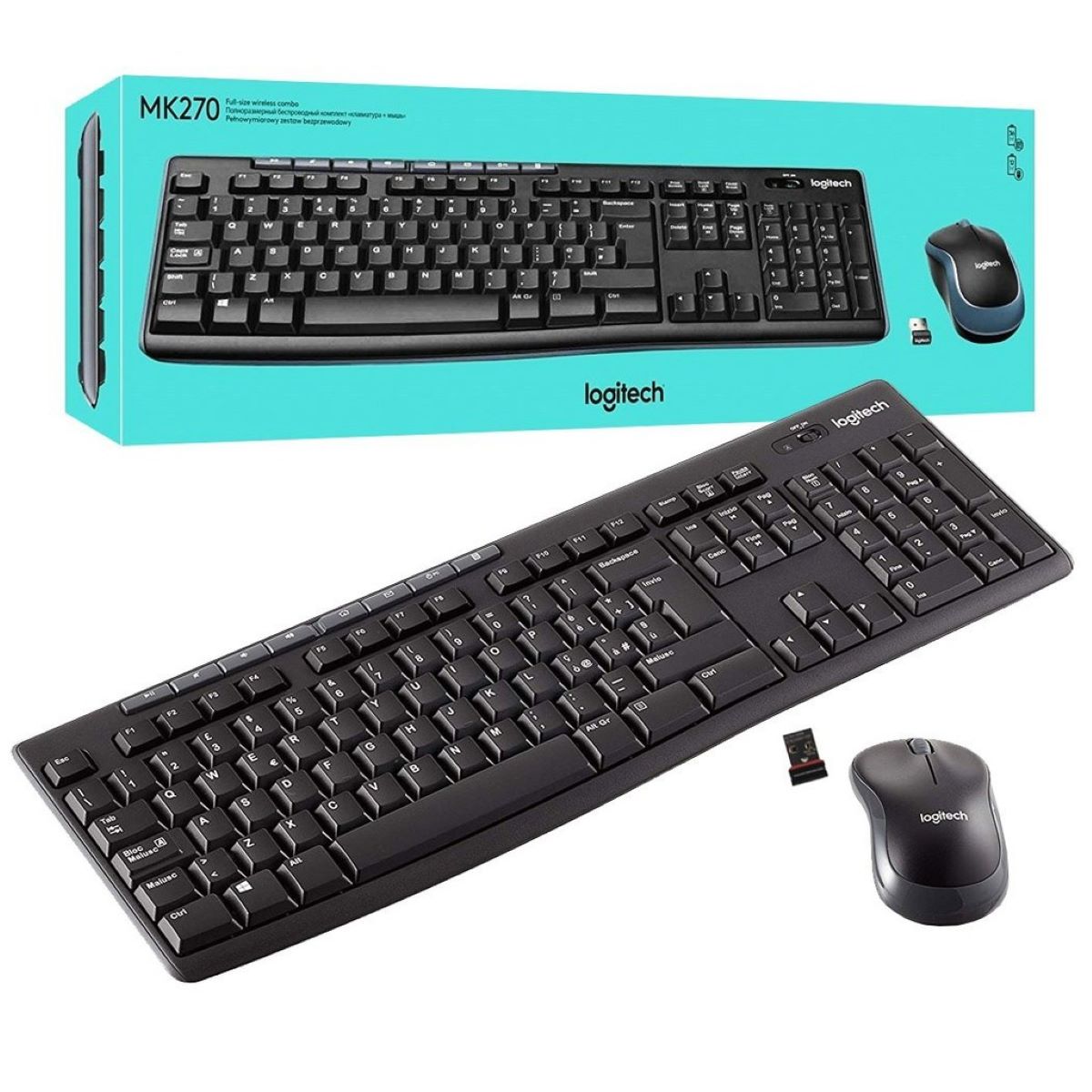Introduction
Welcome to our comprehensive guide on how to size a UPS battery! Uninterruptible Power Supply (UPS) systems are essential for providing backup power to protect your electronic equipment during power outages or voltage fluctuations. However, selecting the right UPS battery size is crucial to ensure optimal performance and sufficient power supply for your devices. In this guide, we will walk you through the step-by-step process of accurately sizing a UPS battery, taking into account various factors and considerations.
Whether you’re setting up a new UPS system or upgrading an existing one, correctly sizing the battery is essential to maintain the stability and reliability of your critical equipment. An undersized battery could result in insufficient power backup, leading to unexpected shutdowns, data loss, or damage to your devices. On the other hand, an oversized battery may result in unnecessary costs and inefficiencies.
In the following sections, we will discuss the key factors you need to consider when sizing a UPS battery and provide detailed steps to help you determine the appropriate battery capacity for your specific needs. We will also touch upon additional factors and features that you should keep in mind to maximize the functionality and longevity of your UPS system.
Before we dive into the details, it’s important to note that sizing a UPS battery requires a basic understanding of your equipment’s power requirements and usage patterns. The more accurate your calculations, the better you can meet the power demands and ensure uninterrupted operation of your devices.
So, without further ado, let’s explore the world of UPS battery sizing and help you make an informed decision for your power backup needs!
Why is UPS Sizing Important?
Properly sizing a UPS battery is of utmost importance to ensure reliable power backup and protect your critical electronic equipment. Here’s why UPS sizing matters:
- Prevents equipment damage: Inadequate power backup capacity can lead to unexpected shutdowns during power outages, exposing your devices to potential damage. By accurately sizing the UPS battery, you can ensure continuous power supply, preventing harm to sensitive components and avoiding costly repairs or replacements.
- Guarantees uninterrupted operation: A UPS system is designed to provide seamless power transition during blackouts or voltage fluctuations. By selecting the right size of UPS battery, you can ensure uninterrupted operation of your equipment, allowing you to continue your work without disruption and minimize productivity losses.
- Protects against data loss: Power outages can result in data corruption or loss if your devices are not powered down safely. A properly sized UPS battery provides sufficient runtime to safely shut down your equipment, ensuring data integrity and preventing potential data loss or corruption.
- Supports planned maintenance: UPS systems are often used to bridge the gap during planned maintenance or equipment upgrades. If the UPS battery is undersized, it may not be able to sustain your equipment during the maintenance window, leaving your systems vulnerable. Proper sizing ensures uninterrupted operation during these planned downtimes.
- Optimizes energy efficiency: Oversized UPS batteries can lead to wasteful energy consumption as the excessive capacity may remain unused for extended periods. By accurately sizing the battery to match your equipment’s power requirements, you can optimize energy efficiency and minimize operating costs.
Considering these factors, it becomes clear that UPS sizing is crucial for protecting your equipment, ensuring uninterrupted operation, and maximizing energy efficiency. By following the steps outlined in this guide, you can confidently determine the appropriate battery size for your UPS system, providing reliable power backup and peace of mind.
Factors to Consider When Sizing a UPS Battery
Sizing a UPS battery involves considering multiple factors to ensure that it meets the power requirements of your electronic equipment. Here are the key factors to keep in mind:
- Power Requirements: Determine the power needs of each device that will be connected to the UPS. This includes both the rated power (in watts or volt-amperes) and the power factor. The power factor takes into account the efficiency of the equipment in converting power into useful work. It is crucial to consider both values to accurately size the UPS battery.
- Load Growth: Factor in any anticipated growth or changes in your power requirements. If you expect to expand your setup or add more devices in the future, it’s essential to account for the potential increase in power demand when sizing the UPS battery. This will allow room for scalability and future-proof your backup power solution.
- Runtime Requirements: Determine how long you need the UPS battery to provide power during an outage. Consider the typical duration of power outages in your area and the time required to safely shut down your equipment. This will help you calculate the runtime needed, which is the duration for which the UPS battery can sustain your devices without external power input.
- Battery Aging: Consider the aging characteristics of the battery. Batteries degrade over time and lose capacity. Accounting for this aging factor helps ensure that your battery will still meet the required runtime as it ages. It is recommended to plan for battery replacement or capacity loss over time to maintain optimal backup performance.
- Redundancy: Evaluate the criticality of your equipment and the level of redundancy you desire. Redundant UPS batteries can provide increased reliability and fault tolerance. Assess whether a single UPS with redundant batteries or multiple smaller UPS units is the best solution for your specific needs.
By carefully considering these factors, you can accurately size the UPS battery and ensure seamless power backup to protect your electronic equipment. Next, we will dive into the step-by-step process of determining the appropriate battery capacity required for your setup.
Step 1: Determine the Power Requirements of Your Equipment
The first step in sizing a UPS battery is to determine the power requirements of the devices you plan to connect to the UPS. This includes understanding both the rated power and the power factor of each device.
Rated Power: The rated power, measured in watts or volt-amperes (VA), indicates the amount of power the equipment requires to operate. You can usually find this information on the device’s label or in its user manual. Make a list of all the devices you intend to connect to the UPS and note their respective rated power values.
Power Factor: The power factor (PF) takes into account the efficiency of the device in converting power into useful work. It is represented as a decimal or a percentage. Devices with power factor values closer to 1.0 are more efficient. To calculate the apparent power (VA) of a device, multiply the rated power (in watts) by the power factor.
For example, if a device has a rated power of 500 watts and a power factor of 0.8, the apparent power (VA) would be 500 watts x 0.8 = 400 VA.
Once you have obtained the rated power and power factor values for all the devices, sum up the apparent power (VA) of each device to get the total power load.
It’s important to note that some equipment, such as motors or devices with power factor correction, may have power factors below 1.0. In such cases, the apparent power (VA) will be greater than the rated power (watts).
By accurately determining the power requirements of your equipment, you will have a solid foundation for the next steps in sizing the UPS battery. In the following step, we will discuss how to calculate the total power load.
Step 2: Calculate the Total Power Load
Once you have determined the power requirements of each device, the next step in sizing a UPS battery is calculating the total power load. This involves summing up the power requirements of all the devices that will be connected to the UPS.
To calculate the total power load, add up the rated power or the apparent power (VA) of each device. If the power factor is provided for each device, you can use the apparent power (VA) directly. Otherwise, use the rated power (watts) and assume a power factor of 1.0.
For example, let’s say you have three devices with the following specifications:
- Device 1: Rated Power 200 watts, Power Factor 0.9
- Device 2: Rated Power 150 watts, Power Factor 1.0
- Device 3: Rated Power 300 watts, Power Factor 0.8
To calculate the total power load, sum up the apparent power (VA) or the rated power (watts) of each device:
Device 1: 200 watts x 0.9 = 180 VA
Device 2: 150 watts x 1.0 = 150 VA
Device 3: 300 watts x 0.8 = 240 VA
Total Power Load: 180 VA + 150 VA + 240 VA = 570 VA
In this example, the total power load for the three devices is 570 VA. This value represents the approximate power capacity you will need from the UPS battery to effectively support these devices.
Calculating the total power load allows you to understand the overall power requirements of your equipment and move forward with sizing the UPS battery accurately. In the next step, we will discuss how to determine the runtime needed.
Step 3: Determine the Runtime Needed
After calculating the total power load, the next step in sizing a UPS battery is to determine the runtime needed. Runtime refers to the amount of time you require the UPS battery to provide power to your devices during an outage.
The runtime needed depends on various factors, including the duration of typical power outages in your area and the time required to safely shut down your equipment. To determine the runtime, consider the following:
- Power Outage Duration: Research and gather information about the average length of power outages in your geographical location. This can help you estimate the minimum runtime required to cover these outages.
- Device Power Consumption: Assess the power consumption of your devices during normal operation. This will give you an idea of the power draw and help you estimate the amount of time the UPS battery can sustain your equipment. Keep in mind that the power consumption may vary depending on the workload and usage patterns of your devices.
- Safe Shutdown Time: Determine the time it takes to safely shut down your devices in case of a power outage. This is crucial to ensure that your data is saved and your equipment is not damaged. Consider any software or hardware processes required for a proper shutdown, as well as the time it takes for your devices to complete these processes.
Once you have gathered this information, you can estimate the runtime needed by considering the worst-case scenario. Add up the estimated power consumption of your devices during an outage and multiply it by the desired runtime.
For example, if the estimated power consumption of your devices is 300 watts and you need the UPS battery to provide power for 30 minutes, the required runtime would be:
Runtime Needed = Power Consumption (watts) x Time (hours)
Runtime Needed = 300 watts x 0.5 hours (30 minutes) = 150 watt-hours
By determining the approximate runtime needed, you can ensure that the UPS battery can sustain your equipment for the desired duration during a power outage. This enables you to safely shut down your devices and mitigate the risk of data loss or equipment damage.
In the next step, we will discuss how to calculate the total battery capacity required based on the power load and desired runtime.
Step 4: Calculate the Total Battery Capacity Required
Once you have determined the power load and the desired runtime, the next step in sizing a UPS battery is to calculate the total battery capacity required. This refers to the amount of energy the battery needs to store in order to provide the necessary power for the specified runtime.
To calculate the total battery capacity, you need to convert the power load and runtime into a common unit, usually watt-hours (Wh). Here’s how you can do it:
- Convert Power Load to Watt-hours: Multiply the power load by the runtime (in hours). For example, if your power load is 500 watts and you require a runtime of 1 hour, the power load in watt-hours would be 500 Wh.
- Account for UPS Efficiency: Take into consideration the efficiency of the UPS system. UPS systems are not 100% efficient, so you need to adjust the calculated watt-hours by dividing it by the UPS efficiency. For example, if your UPS has an efficiency rating of 90%, you would divide the watt-hours by 0.9 to compensate for the efficiency loss.
- Consider Battery Discharge Depth: Batteries have a recommended maximum depth of discharge (DoD), which indicates the percentage of the battery’s total capacity that should be used. It is advisable to keep the DoD within the manufacturer’s specified range to maximize battery life. Multiply the adjusted watt-hours by the reciprocal of the DoD. For example, if the recommended maximum DoD is 80%, multiply the adjusted watt-hours by 1 divided by 0.8.
By following these steps, you can calculate the total battery capacity required for your UPS system. This value represents the total energy storage needed to provide the desired power load for the specified runtime.
It is crucial to accurately calculate the battery capacity to ensure sufficient backup power. A battery with inadequate capacity may not be able to support the power load for the desired runtime or may result in premature battery failure. On the other hand, an oversized battery may unnecessarily increase the cost and physical footprint of the UPS system.
In the next step, we will discuss how to select the appropriate UPS battery size based on the calculated total battery capacity.
Step 5: Select the Appropriate UPS Battery Size
After calculating the total battery capacity required, the next step in sizing a UPS battery is to select the appropriate battery size that meets your specific needs.
When selecting the UPS battery size, consider the following factors:
- Battery Capacity: Refer to the calculated total battery capacity required in watt-hours. Look for UPS batteries with capacities that closely match or slightly exceed this value. It is advisable to choose a battery with a slightly higher capacity to provide a buffer and accommodate potential power fluctuations or future growth.
- Battery Chemistry: Choose the battery chemistry that best suits your needs. Common UPS battery chemistries include Valve Regulated Lead Acid (VRLA) batteries, Lithium-ion (Li-ion) batteries, and Nickel-Cadmium (Ni-Cd) batteries. Consider factors such as cost, maintenance requirements, lifespan, and environmental considerations when selecting the battery chemistry.
- Voltage Requirements: Ensure that the UPS battery’s voltage matches the input voltage requirements of your equipment. Most UPS batteries are designed to provide 120V or 230V output, depending on the electrical standards in your region. Verify compatibility to avoid any issues with power supply.
- Manufacturer’s Recommendations: Consult the UPS manufacturer’s recommendations and specifications for battery sizing. Manufacturers may suggest specific battery models or series that are compatible with their UPS systems, ensuring optimal performance and compatibility.
- Battery Run-Time Options: Consider the available battery run-time options provided by the manufacturer. Some UPS systems offer the flexibility to add external battery modules, allowing you to increase the runtime as needed. This can be beneficial if you anticipate future expansion or have specific runtime requirements.
By considering these factors, you can select the appropriate UPS battery size that aligns with your power requirements and provides the necessary backup time for your equipment. Remember to also consider any additional features or requirements you may have, such as hot-swappable batteries, remote monitoring, or compatibility with specific management software.
Once you have selected the UPS battery, ensure that it is compatible with your UPS system and follow the manufacturer’s guidelines for battery installation and maintenance to maximize its lifespan and performance.
In the next step, we will discuss additional factors and features to consider when sizing a UPS battery.
Step 6: Consider Additional Factors and Features
When sizing a UPS battery, it is important to consider additional factors and features that can enhance the functionality and efficiency of your backup power system. Here are some key aspects to keep in mind:
- Efficiency: Look for UPS systems that offer high efficiency ratings. Higher efficiency means less energy is wasted during operation, resulting in lower energy costs and reduced environmental impact.
- Scalability: Consider the scalability of the UPS system. Assess whether it allows for easy expansion by adding more battery modules or increasing the overall capacity to accommodate future growth or changes in power requirements.
- Management and Monitoring: Evaluate the management and monitoring capabilities of the UPS system. Look for features such as remote monitoring, email notifications, and real-time status updates to quickly identify and address any issues that may arise.
- Battery Management: Check if the UPS system offers advanced battery management features, such as automated battery testing, temperature monitoring, and charge cycle management. These features can help prolong the lifespan and optimize the performance of the UPS battery.
- Redundancy and Fault Tolerance: Assess the UPS system’s ability to provide redundancy and fault tolerance. Consider whether it allows for parallel operation or provides built-in redundancy through multiple UPS units to minimize the risk of single-point failures.
- Noise Level: Consider the noise level of the UPS system, especially if it will be located in a noise-sensitive environment. Look for units with low noise emissions or options to adjust fan speeds for quieter operation.
- Physical Space: Evaluate the physical space available for the UPS system. Consider the dimensions and form factor of the UPS unit and any additional battery modules if applicable.
By considering these additional factors and features, you can ensure that the UPS system and battery meet your specific requirements and provide the necessary functionalities to support your critical electronic equipment.
Before finalizing your decision, it is recommended to review the product specifications, consult with manufacturers or experts, and seek professional advice if needed. This will help ensure that you make an informed choice and optimize the performance and reliability of your backup power system.
With these steps and considerations in mind, you are well-equipped to size a UPS battery and select the most suitable solution for your power backup needs.
Conclusion
Sizing a UPS battery is a crucial process for ensuring reliable power backup and protecting your electronic equipment. By following the steps outlined in this guide, you can accurately determine the appropriate battery capacity and select the right UPS battery size for your specific needs.
Starting with understanding the power requirements of your equipment, you can calculate the total power load and determine the runtime needed to sustain your devices during outages. With this information, you can then calculate the total battery capacity required, taking into account factors like UPS efficiency and recommended battery discharge depth.
Once the total battery capacity is determined, you can proceed to select the appropriate UPS battery size, considering factors such as battery chemistry, voltage requirements, and manufacturer’s recommendations. Additionally, it is important to consider additional features like efficiency, scalability, management and monitoring capabilities, and redundancy to ensure optimal functionality and performance of the UPS system.
It is crucial to conduct thorough research, consult with experts or manufacturers, and consider the specific requirements of your equipment and environment when sizing a UPS battery. This will help ensure that you choose a UPS system that effectively meets your power backup needs and provides reliable protection for your critical electronic devices.
Remember to follow the manufacturer’s guidelines for installation, maintenance, and battery replacement, and regularly test the UPS system to ensure its ongoing performance and effectiveness.
By investing time and effort into accurately sizing a UPS battery, you can have peace of mind knowing that your electronic equipment is protected from power outages, voltage fluctuations, and potential damage. This will allow you to continue your work uninterrupted, safeguard your data, and avoid costly downtime or repairs.
So, armed with this knowledge, go ahead and size your UPS battery with confidence, ensuring a reliable power backup solution for your electronic devices.

























